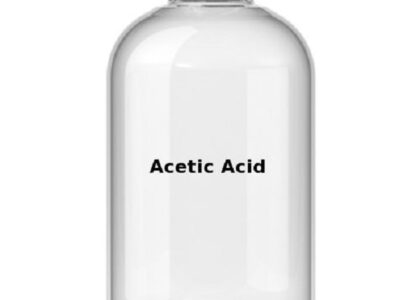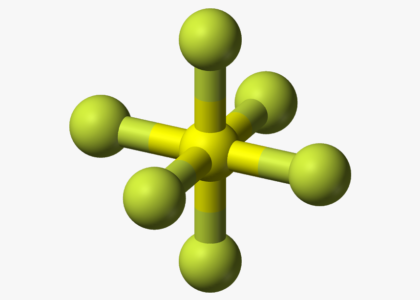The global market for high barrier packaging films in the pharmaceutical sector is poised to surpass US$ 812.5 million by 2033, projecting a consistent Compound Annual Growth Rate (CAGR) of 5.3%. Currently valued at US$ 484.8 million in 2023, the market is anticipated to experience substantial growth over the forecast period. This growth is driven by the increasing demand for advanced packaging solutions that offer enhanced protection for pharmaceutical products, addressing concerns related to shelf life, safety, and regulatory compliance in the dynamic pharmaceutical industry landscape. The market is set to evolve as a vital component in ensuring product integrity.
In the realm of global high barrier packaging films for pharmaceuticals, the emphasis on barrier material application is evident, particularly in packaging formats such as blisters, bags, and pouches. Blisters stand out as the preferred choice for solid pharmaceuticals, given their unit dosing format and the numerous advantages it offers over bulk packaging. Meanwhile, bags and pouches gain preference for pharmaceutical powders and bulk pharmaceutical products.
The European region stands as a significant market for high barrier packaging films specifically tailored for pharmaceutical blisters, owing to the pronounced inclination towards blister packaging over alternative formats. Conversely, North America emerges as a substantial market for high barrier packaging films designed for pharmaceutical bags and pouches.
Request Sample Report: https://www.futuremarketinsights.com/reports/sample/rep-gb-6402
The industry is inundated with the demand for multi-layered packaging films. High barrier packaging films contain multiple layers that restrict any adverse response caused by UV light and mineral oil. This packaging also creates a barrier between the contents of the packaging and external factors like moisture, oxygen, and other gases such as carbon dioxide. Since high barrier films are solvent-free and do not react with pharmaceutical packaged goods, they are observing high demand in pharmaceuticals.
High barrier packaging films have umpteen factors supporting their widespread use in the pharmaceutical industry. Some of these factors include cost-effectiveness, isolation from the outside environment, ease of handling, and a high level of protection. These films help regulate the temperature inside the packaging, thus contributing to its market expansion.
The films also help prolong the shelf life of a product by protecting it from light, moisture, biological contamination, and gases. Packaging manufacturers are shifting their focus to biodegradable innovative packaging solutions, which is expected to initiate the development of improved versions of additives and plastic films. Growing demand for customer-friendly packaging is also projected to have a positive impact on the high barrier packaging films for the pharmaceuticals industry.
Top Highlights from the FMI’s Analysis of High Barrier Packaging Films for the Pharmaceuticals Industry:
- The North America market attained a market share of 32.1% in 2022.
- The United States showcased a prominent market share of 29.1% in the year 2022.
- Europe is expected to trail behind North America. The European region is projected to grasp a market share of 29.6%.
- The German market is expected to experience a market share of 6.5% in 2022.
- The United Kingdom market is expected to expand at a CAGR of 5.6%.
- Within Asia Pacific, India, and China are projected to attain a CAGR of 7.1% and 6.8%, respectively, in the forecast period.
- On the basis of product type, coextruded films accounted for 80.7% in 2022.
- Based on application, blisters garnered a market share of 65.8% in 2022.
Ready to Learn About Our Approach? Explore Our Methodology: https://www.futuremarketinsights.com/request-report-methodology/rep-gb-6402
Market Drivers:
- Increasing Pharmaceutical Industry: The growth of the pharmaceutical industry is a significant driver for the high barrier packaging films market. As the demand for pharmaceutical products rises globally, the need for efficient and protective packaging also increases.
- Stringent Regulations: Strict regulatory requirements for pharmaceutical packaging to ensure product safety and efficacy drive the adoption of high barrier packaging films. Compliance with regulations and standards is crucial for pharmaceutical companies.
- Product Shelf Life Extension: High barrier packaging helps extend the shelf life of pharmaceutical products by protecting them from moisture, oxygen, and other external factors. This is particularly important for drugs with sensitive formulations.
- Technological Advancements: Ongoing innovations and advancements in packaging materials and technologies contribute to the growth of high barrier packaging films. Improved barrier properties, enhanced durability, and sustainable packaging solutions are often driving factors.
- Globalization of Supply Chains: With pharmaceutical supply chains becoming more globalized, there is an increased focus on ensuring the integrity of products during transportation and storage. High barrier packaging plays a crucial role in maintaining product quality during transit.
Market Restraints:
- Cost Constraints: High barrier packaging films can be more expensive compared to traditional packaging materials. The additional cost can be a restraint, especially for smaller pharmaceutical companies or those operating in cost-sensitive markets.
- Environmental Concerns: While high barrier packaging is effective in protecting pharmaceutical products, the environmental impact of these materials, particularly in terms of recycling and disposal, can be a concern. Sustainable packaging alternatives may be sought to address this issue.
- Complexity of Manufacturing Processes: The production of high barrier packaging films can involve sophisticated manufacturing processes, leading to challenges in scalability and cost-effectiveness. Streamlining manufacturing processes is essential to address these concerns.
- Limited Transparency: In some cases, the high barrier nature of the packaging may limit visibility into the product, preventing visual inspection. This can be a concern for quality control and regulatory compliance.
Competitive Landscape
- Amcor plc
- Bemis Company, Inc.
- Sealed Air
- KUREHA CORPORATION
- FLAIR Flexible packaging Corporation
- WINPAK Ltd.
- MULTIVAC
- DuPont, BERNHARDT Packaging & Process
Key Developments in the High Barrier Packaging Films for Pharmaceuticals Market:
- ACG’s high barrier ULTRASAFE and ACLAR films are coming across as being explicitly transparent and make provisions for the highest barrier against moisture and oxygen. These films go well on blister packaging machines and give better output with abysmal wastage.
- In April 2022, Toppan introduced high-barrier transparent film for applications focused on food and pharma. The new series of transparent barrier films are of a new grade that offers high-barrier performance clubbed with light shielding. The new solution has expanded the application spectrum and is present in markets in Japan and overseas.
Stay Updated with Recent Developments in the High Barrier Packaging Films for Pharmaceuticals Market
- Raven Industries Inc., in August 2020, launched the BioFlex I-series, which is a new product in its plastic film line. The latex-free film is utilized in personal defense equipment (PPE). This innovation is utilized in laboratories and hospitals to avoid hospital acquired infections (HAIs). It goes without saying that the product complements the company’s product line.
- In September 2021, Flex Films introduced ultra-high barrier film made of metallic polyester ‘F-UHB-M’ for the substitution of AI foil. This recyclable film is made of high-value proposition. The film has economic benefits, metal bond performance, and sustainability quotient.
Buy Now/Purchase: https://www.futuremarketinsights.com/checkout/6402
Key Segments Covered in High Barrier Packaging Films for Pharmaceuticals Industry Research
by Product
- Cold-Formable Films
- Coextruded Films
- Thermo-Formable Films
by Material
- Aluminium
- Plastics
by Adhesion
- Bags and Pouches
- Blisters
About Future Market Insights (FMI)
Future Market Insights, Inc. (ESOMAR certified, recipient of the Stevie Award, and a member of the Greater New York Chamber of Commerce) offers profound insights into the driving factors that are boosting demand in the market. FMI stands as the leading global provider of market intelligence, advisory services, consulting, and events for the Packaging, Food and Beverage, Consumer, Technology, Healthcare, Industrial, and Chemicals markets. With a vast team of over 5000 analysts worldwide, FMI provides global, regional, and local expertise on diverse domains and industry trends across more than 110 countries.
Contact Us:
Future Market Insights Inc.
Christiana Corporate, 200 Continental Drive,
Suite 401, Newark, Delaware – 19713, USA
T: +1-845-579-5705
For Sales Enquiries: sales@futuremarketinsights.com
Website: https://www.futuremarketinsights.com
LinkedIn| Twitter| Blogs | YouTube





